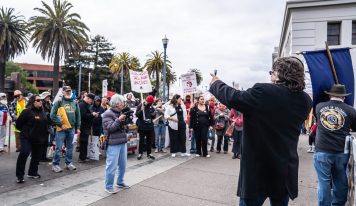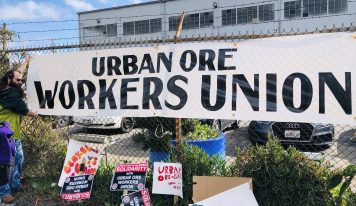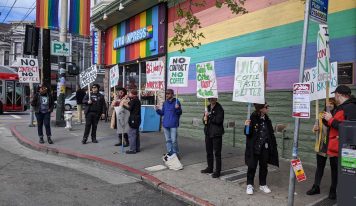San Francisco — We’re all waiting for the much-heralded COVID-19 vaccine to be widely administered so that our favorite places can open up again. But even though millions of vaccines have been manufactured, and 2.4 million doses have been delivered to California for distribution, the pace of vaccination is disastrously slow.
As of this writing, only 27% of California’s vaccines have been administered, putting it at the bottom of the states. Every delay in vaccination costs lives and pushes back the day when we can finally emerge from our shelter. So why is it going so agonizingly slow, especially in a city like San Francisco which prides itself on being tech-savvy and logistically efficient?
Many in City Hall are asking this same question, including Supervisor Matt Haney who called the situation “unacceptable” and said that even he had very little insight into timelines or process of vaccine distribution even at this late stage. Citizens are reporting empty vaccine distribution sites across the Bay Area, and the wait time to get information and guidance from private providers such as Kaiser Permanente is at least an hour, and sometimes up to 5 hours.
Confusion about the vaccine distribution is rampant. For providers, citizens, and even many government officials the vague descriptions of the different phases aren’t enough to make a plan around, and everyone seems to be passing the buck.
Once the state allotted the vaccines to San Francisco, the City’s position was that the last-mile distribution is up to the healthcare providers. But these providers don’t have the resources to scale up their operation, nor in many cases do they even know which priority group people fall into. On the citizen side, it’s a confusing mess that seems to change hourly, and everyone’s situation is different since there are many different healthcare providers distributing the vaccine.
But not every state is having these problems. West Virginia, one of the most rural and underdeveloped states, is vastly exceeding the vaccination rates of California and San Francisco by not partnering with national monopolies like CVS and Walgreens as every other state has.
Because West Virginia does not have to deal with the national bureaucracies of these megacorporations, they are more flexible and can partner with local rural clinics that know their community well so that priority recipients can be identified easily. Furthermore the guidance from the state is clearer and came with plenty of notice so that providers could scale up operations in anticipation of vaccines arriving.
While all this seems very obvious, San Francisco did no such thing and is only now (halfway through what was supposed to be the Phase I priority rollout) thinking through their vaccination rollout plan.
The City announced Friday it will open three vaccination sites and open a website so that citizens can register to be notified when it is their turn to get vaccinated. Supervisor Haney greeted this announcement by saying “this is a massive, welcomed shift from a week ago when their position was ‘no widespread distribution from the county’”.
Clearly the reliance on private corporations to deliver live-saving vaccines is inefficient and will lead to thousands of unnecessary deaths. The numerous perverse incentives and inefficiencies that a competitive healthcare system produces normally hurts only the most vulnerable in society. But now that everyone is feeling what it’s like to deal with hospital and insurance bureaucracies in matters of life and death, there is no denying that our healthcare system needs to take a cooperative, rather than competitive, approach to handle the challenges of a modern pandemic.
Editor’s Note: A previous version of this article linked to “Covid-19 vaccine and calendar” by Jernej Furman which is licensed under CC BY 2.0





